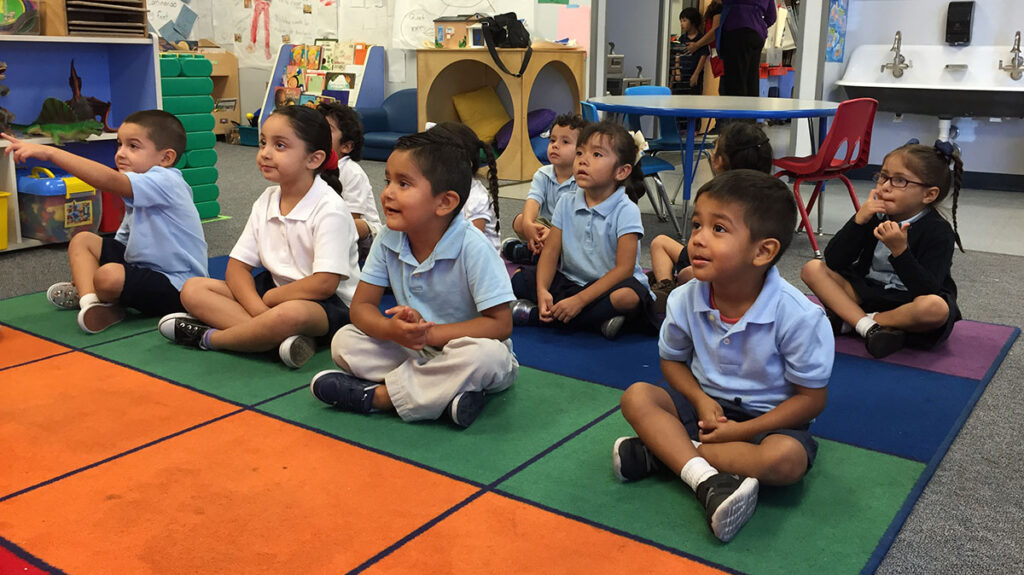I ran across a fascinating study from the Brown Center on Education Policy that posed a critical question about students of color: what effect does having a same-race teacher have on suspensions? We need to understand why this is a critical question and the Brown Center helpfully offers some statistical data which I will include, but first we need to understand the scale of the problem for children of color and how it begins with their very first contact with organized education.

image via npscoalition.org
Suspensions and expulsions for children of color are significantly higher proportional to enrollment, beginning in preschool. In fact, data from 2014 showed that preschool children of all races were being expelled at rates more than three times higher than children in K-12 settings.* That was a lot of very young children being expelled from preschool, which has resulted in a flurry of measures to address the problem. BUT, more recent data shows that while suspensions and expulsions have gone down overall, a very high proportion of children of color are expelled and suspended from preschool, and this is especially true for Black boys. Black children make up just 19% of PreK enrollment, but they account for 47% of all suspensions, especially multiple suspensions. The National Prevention Science Coalition to Improve Lives cites research noting that a handful of Southern states (Louisiana, Mississippi, South Carolina, Georgia, and Texas) were driving much of this disparity between Black and white children as of 2020. This matters because it establishes a pattern going forward. Once children of color reach the primary grades, they continue to be suspended at higher rates: 39% for Black children, 17% for Latinx children, and 16% for white children. The Brown Institute study notes that 1 in 5 Latinx boys are suspended before they enter high school.

image via communityplaythings.com
The issue with these very young children of color (remember: we are talking about 3 and 4 year-olds) is that there is evidence that their behavior is not more severe than other children. A pair of studies from 2014** demonstrated that the disproportionate response in preschool and early elementary was coming from the adults, who both scrutinized Black children and children of color more closely and punished them more severely. We can see some of this same type of disparity in gender suspension rates, where the behavior of boys is more closely scrutinized and less tolerated than that of girls — preschool boys are 4 times more likely to be expelled than girls.
Why is this happening? The national Head Start website offers some insights. A few that stood out to me were:
- Teachers may feel overwhelmed by a child’s behavior or may lack the education or skills they need to guide and respond to a child’s challenging behavior.
- Teachers may misunderstand a young child’s challenging behavior. For example, a young child who has experienced trauma may engage in aggressive behaviors or use hurtful language. His behavior may be interpreted as willful or purposeful instead of a reaction to his experiences.
- Implicit bias—unconscious, negative beliefs—may affect how African American boys, in particular, are viewed. Teachers may unknowingly view African American boys as more difficult to control or more harmful. This may lead them to respond more often with harsh consequences, including recommending that children be expelled.
- Early childhood programs may have limited resources and capacity to support staff who have difficulty with a child. Programs such as Early Head Start and Head Start with access to infant/early childhood mental health consultation report less expulsion.

image via edsource.com
All of these are important points, particularly helping teachers understand trauma responses and their own unconscious biases. The fact that Early Head Start and Head Start have fewer expulsions is also of note. I dug around for some comparative data and couldn’t find anything, but I did find that Head Start has a policy that prohibits suspension and expulsion for children unless they pose a safety risk and even then, it’s only to be used as a last resort. There’s a lot of additional language demonstrating that the primary mission of the program is participation, so the program “must explore all possible steps and document all steps taken to address such problems, and facilitate the child’s safe participation…” including mental health consultation and an individualized family service plan that involves the family in the work of keeping the child in the program.
This paradigm, in which the program is there to serve the child and therefore every conceivable effort must be made to keep the child in the program, is not an inconsiderable thing. Exploring multiple means of keeping a child in school and avoiding suspension and expulsion at all costs should be the de facto response of all schools.*** Brown Institute’s study, however, looks at a very specific factor in reducing suspensions: teacher matching. We are going to discuss that in the next post.
*This seems bonkers to me, but it makes some sense when we recognize that a high proportion of preschools are either private or for-profit and therefore have wide latitude over expulsions.
**Anyon, Y., Jenson, J. M., Altschul, I., Farrar, et al. (2014). The persistent effect of race and the promise of alternatives to suspension in school discipline outcomes. Children and Youth Services Review, 44, 379-386 [ii] Skiba, R. J., Arredondo, M. I., & Williams, N. T. (2014); and Skiba, R. J., Chung, C. G., Trachok, M., Baker, T. L., Sheya, A., & Hughes, R. L. (2014). Parsing disciplinary disproportionality: Contributions of infraction, student, and school characteristics to out-of-school suspension and expulsion. American Educational Research Journal, 51(4), 640-670.
***I am sure this still happens somewhere, but I worked in more than one high school where students were routinely suspended from school for skipping school. The way this solution compounds the problem is just mind-boggling.
